Snake reproduction – a reptilian affair!
Text and photographs Pat McKrill and as credited
A baby snake stuck its head out of a hole, dropped the mouse it had just caught and hissed, “hey Mum, what must I do with this?” No-one answered. Snakes can’t hear, nor do they raise or teach their children, so who was it hissing at? Before it in turn gets eaten by something else, I’d suggest it swallows the mouse and disappears. Eischhhh…who wants to be a snake!
Here are some lesser-known bits and pieces about our essential environmental guardians.
I hope as always that I can rationalise some reader perceptions and remove some of the negativity that attaches to our humble servant. I’ve been asked to give a few snippets of information on some of the perhaps lesser-known facts about snakes, starting from the day they were envisioned by the parents, through to the day they are born, the day when they’ll start getting on with addressing the tasks they’ve been allocated by the creator, for their interesting lives on earth.
I’ll take the readers on a journey which briefly looks at the lifecycle, but I’ll cover the journey in reverse, starting with the ‘why they’re here’ bits, and finishing with the ‘how they got here’ bits.
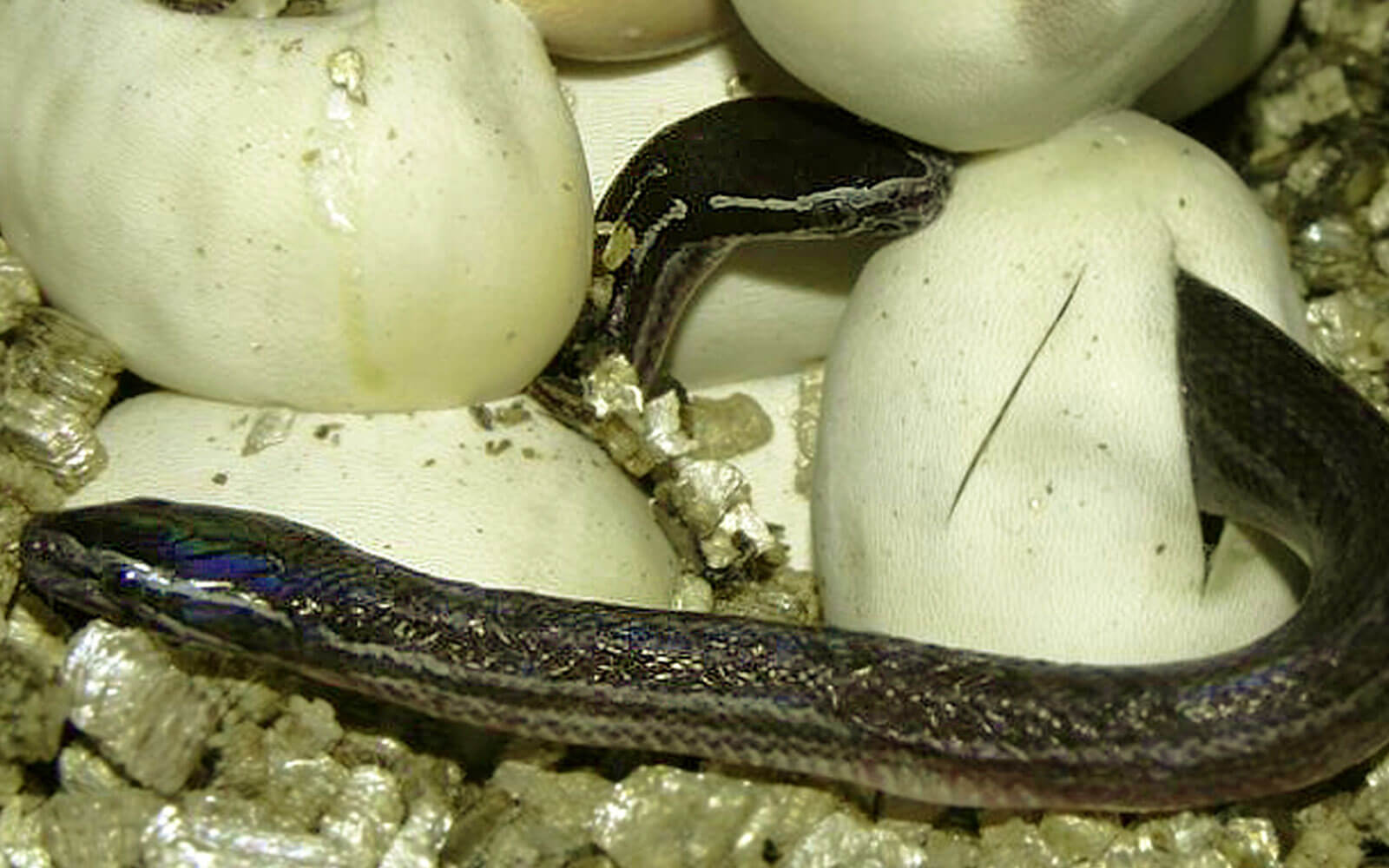
Brown House snakes hatching
Photo: Nick Evans
Why they’re here.
As with most other living creatures and plants on the planet, there comes a time when we all, snakes included, will need to do what we were put on the earth to do. Classed as predators, as far as snakes are concerned, they’ll have two functions to fulfil. The first – something they’ll need to get onto almost from the time they were born – will be to contribute to the maintenance of what we can term the ‘environmental balance’; the prevention of over-breeding of other creatures, which, if allowed to propagate uncontrollably, could contribute to the ultimate destruction of the environment. Their second task will be to continue to propagate their species, and snakes are no different in this respect from most of our flora and fauna.
The only time I’ve heard of them failing to achieve the desired results in either role, has been where man (how did we guess?) in order to solve a self-inflicted problem (e.g. controlling unplanned and unwanted rodent introductions) has interfered – seemingly without too much research into the implications – in their distribution by deliberately placing them in environments where they were never meant to live.
I’ll do my best to keep the story clean whilst at the same time, making it interesting. I’m hoping that those readers who have children with inquisitive minds will find it easier to explain to their little ones because I’m going to try and relate as many aspects as I can, to human behaviour. When we get to the procreation bit, hopefully everyone’s well aware that things have changed since the 1940’s when we were told that we were found in a basket left under the tree in the garden.
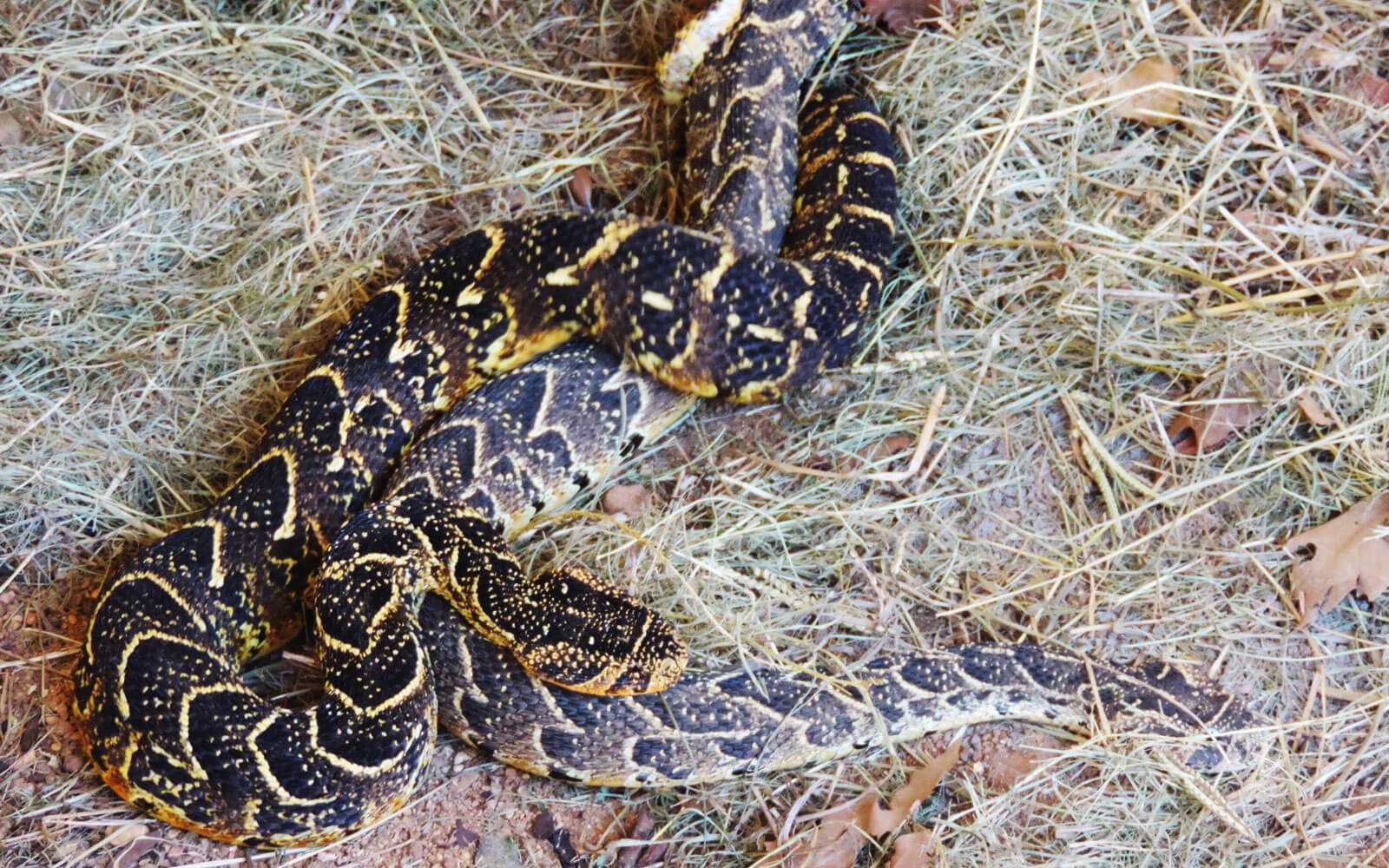
Suitably attired male Puff adder accepting proposal
At the outset, we all need to understand that snakes do not nurture, train or feed their newborns as do many other members of our fauna – and flora*. All newborn snakes have sufficient necessary nutrients within their bodies at birth, to feed them for the first few weeks on earth before they need to start ‘hunting’ and feeding themselves. Although newborn Pythons are known to stay with their mothers for a short period of time after birth – often in their underground ‘nurseries’ – she does not feed them.
*e.g. The Hidden Life of Trees. P.Wohlleben. harpercollins 2017.
Different species have lifetime expectancies relative to their particular species, for example, they could live for say about 10 – 15 years if they’re one of the fossorial species living beneath the earths’ crust, or up to and past about 40 years, possibly more, for a larger snake, a Python for example. Their diverse lifestyles make it virtually impossible to accurately determine the age of any wild-caught species, and many of our snake records are based on information collected from captive bred and raised snakes. Even under controlled circumstances, some same species snakes from the same birth can grow bigger and live longer than others, dependent upon numerous factors, including perhaps, one individual’s innate ability to adapt more readily to circumstances than others. Just like humans.
Ovi or Vivi?
All snakes on the planet, Kloof environmental area included, fall into either one of the 2 main birthing categories that define their pre-birth conception and ultimate exit from the mother’s womb.
Oviparous.
Those which partially develop within the womb in an individual soft-shelled egg, which will ultimately be laid in a suitably protected area, where they will continue to develop into a juvenile snake before cutting the shell open with an egg tooth a month or two later, and emerging as a fully operational snake.
Viviparous.
Fully developing within the mother’s womb after copulation, before ultimately emerging when born, as complete snakes, ready to go to work immediately.
Below, I give a sampling of each of the categories we can encounter in the Kloof area, and some of their common prey preferences. Snakes carry out a vital control role upon other living animals in the wild, such as rodents, birds, amphibians and molluscs (slugs and snails), and only when we consider the hugely negative consequences to our environment without their contribution in the control of the numbers, can we begin to understand their value.
Oviparous.
The Brown House snake Boaedon capensis, varied, mainly rodents. Boomslang Dispholidus typus, varied including birds. Southern Brown Egg eater Dasypeltis inornata, bird eggs. Night Adder Causus rhombeatus, partial to toads. Herald snake Crotaphopeltis hotamboeia, amphibians. Natal Rock Python Python natalensis, mammals. Natal Black snake Macrelaps microlepidotus, wide range of prey, mainly fossorial.
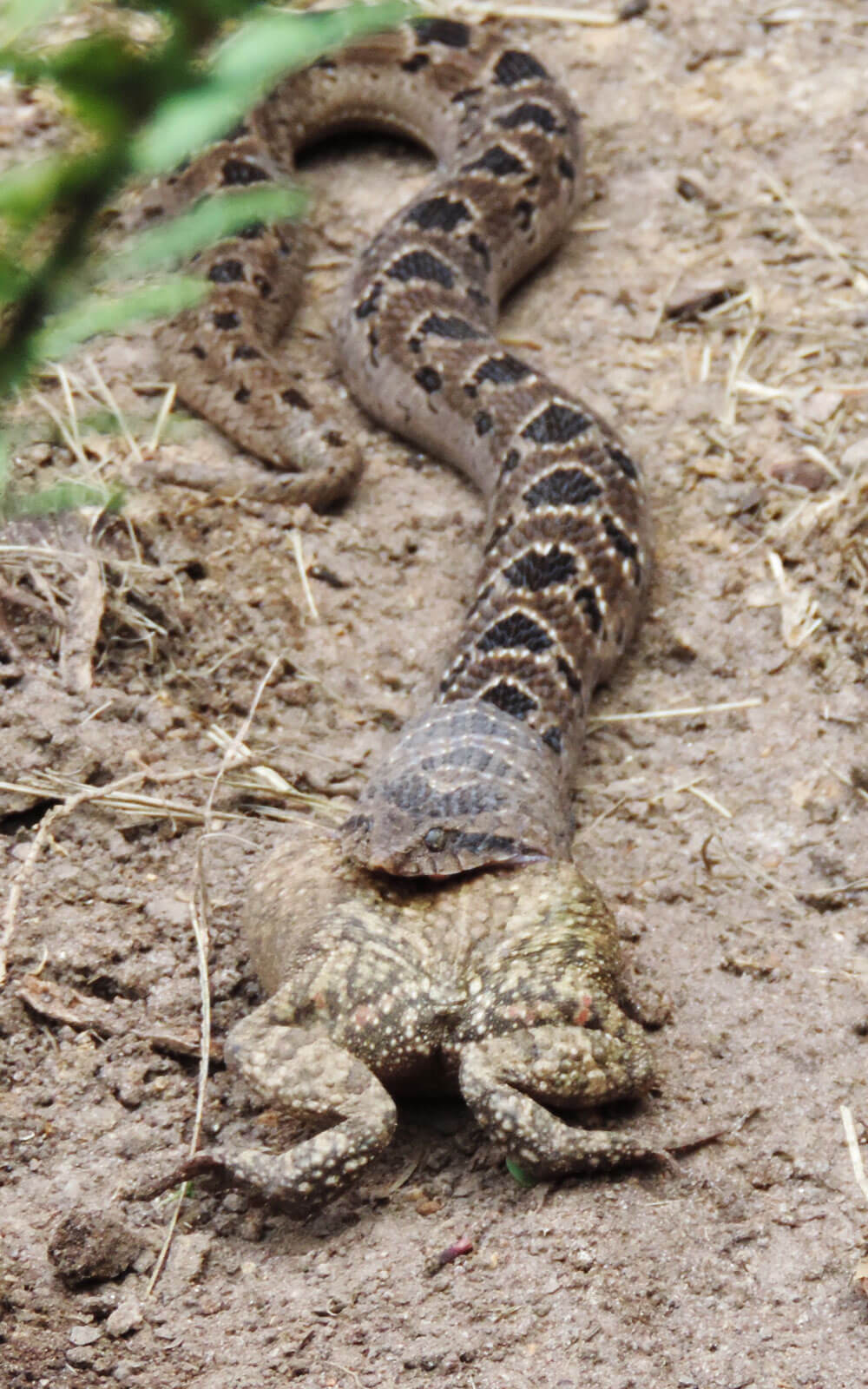
Night adder in the blue still doing its job.
Viviparous.
Very few of our 170 plus species are viviparous, but for interests’ sake, here are some of the few known live-bearing species in South Africa, the first two of which are well-known Kloof residents.
Puff adder Bitis arietans, eat mainly rodents. Common Slug eater Duberria lutrix, specialises on molluscs (slugs and snails). Rinkhals Hemachatus haemachatus, toads. Mole snake Pseudaspis cana, rodents.
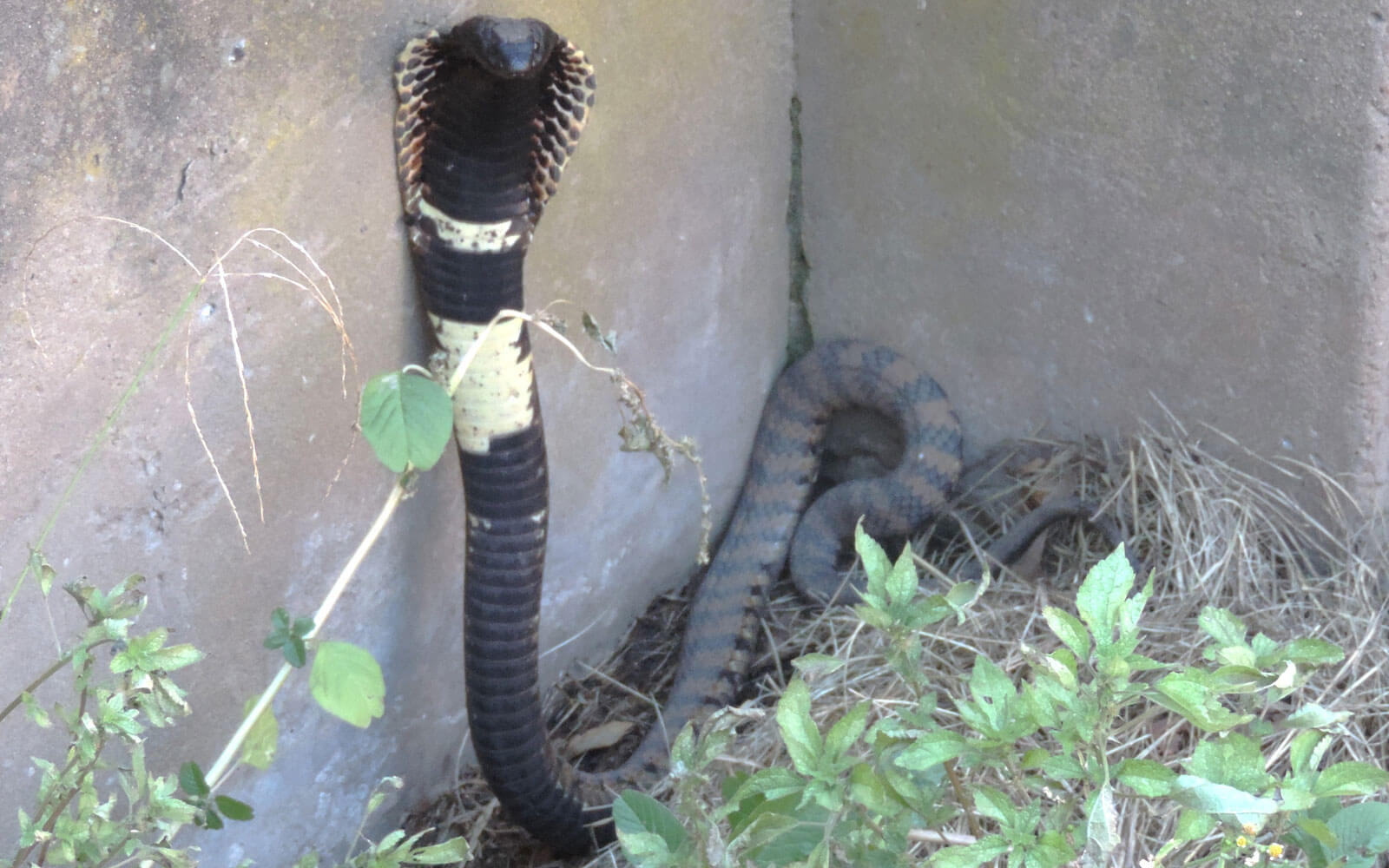
Rinkhals. Inland frog and rodent eater. Viviparous.
How they got here.
How does it all happen?
A snake ‘family’ – mother, father and all the children from a single birthing – can number anything from about 6 in total, up to and over 80 plus.
This can happen more than once in a year for many species, so we can imagine the number of snakes there would be sliding around if there were no similar checks and balances on them. However, a freshly killed snake would probably suit the dietary requirements of most predators, snakes included, so there’s an answer to that one. I would imagine (or should I say ‘just as well’) the creator planned it that way, but even if 10% of the progeny lived their full time on earth, that would surely answer the second task they were allocated, which was to continue to propagate their species. Sounds simple, but it’s not that easy:
1. Snakes don’t pair up and live together forever. They live solitary lives from the day they’re born, so in order to get going with the task of propagation, they’d need to deliberately meet up once they’ve reached the age where this can happen. This could be any time after about 2 years, depending upon the species.
2. From a carefully chosen location, a female in oestrus ‘sends’ her species-specific pheromones out into the ether, telling any similar species males that she’s ready to mate. These can either be physically left on ground trails, or also in the air. Same species males anywhere in the vicinity – sometimes many kilometres away – would pick up these pheromones with their highly sensitive tongue tips, which would in turn, deposit these into the pits of the Jacobsons organ in the roof of their mouth. Message ‘received’.
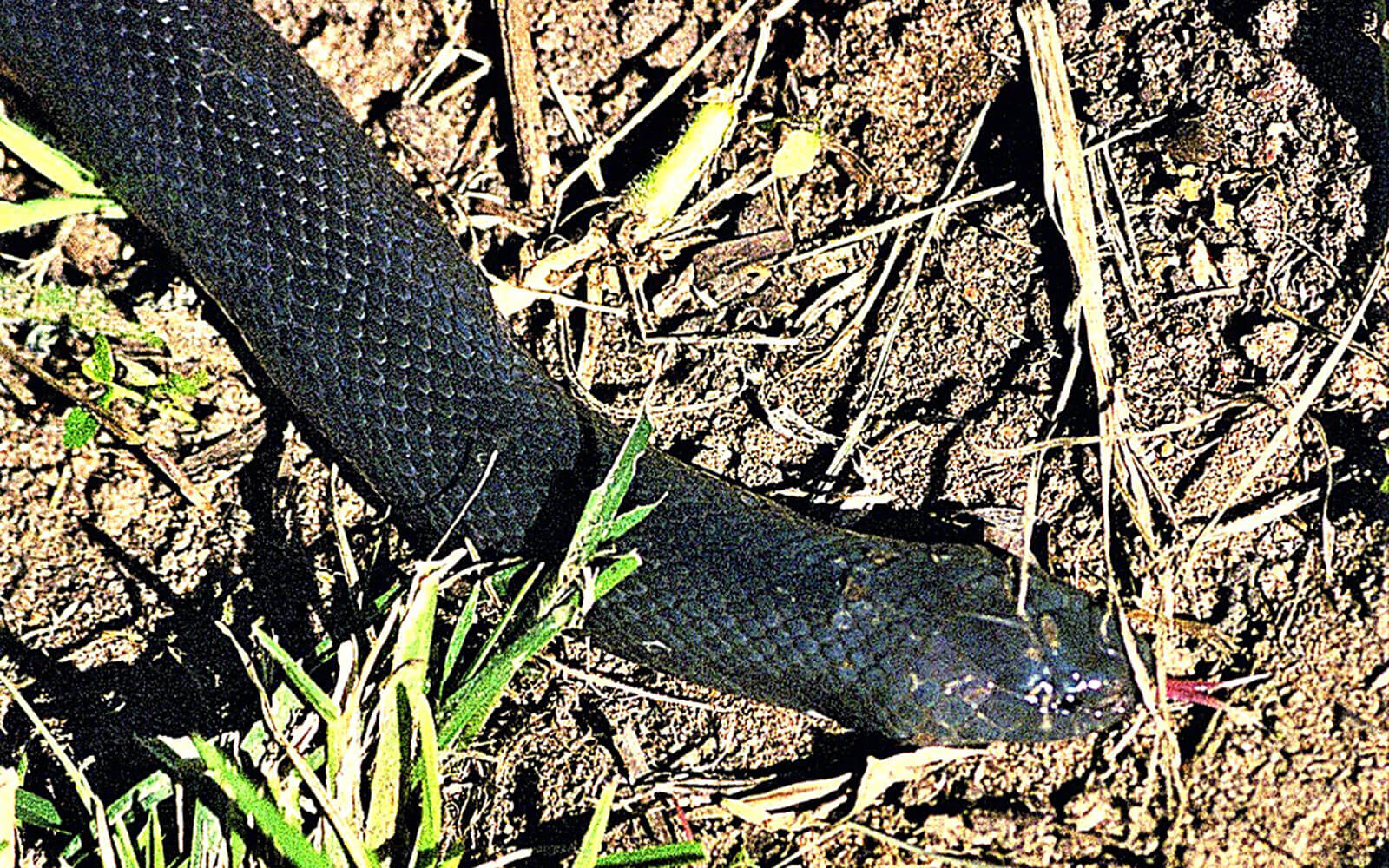
Natal Black tongue tasting for info.
3. Responding males will travel considerable distances to locate the sender, and upon arrival, could meet up with any number of similarly responding males. The presence of other responders will lead to numerous competitive ‘wrestling matches’ between males, designed to produce a successful suitor. Most species will settle on a simple ‘knock-down’ result, except for the Mole snake, which brings his mouth-filled armoury of teeth out, inflicting serious wounds upon any opponents. The female will decide who wins. The now ‘matched’ couple will leave the ‘arena’ and head for the previously selected (by the female) consummation area.
4. A certain amount of ‘getting to know you’ writhing and head brushing will take place between the two ‘partners’, until they’re ready to copulate.
5. At the time of copulation, the male inserts one of his two hemipenes which lie within the tail area below the anal aperture, into the female cloaca. These species-specific hemipenes are filled with fluid to enable the eversion of the organs, but only one is used at a time, for the transmission of sperm into the female cloaca. The process can take a few minutes, up to hours depending on species.
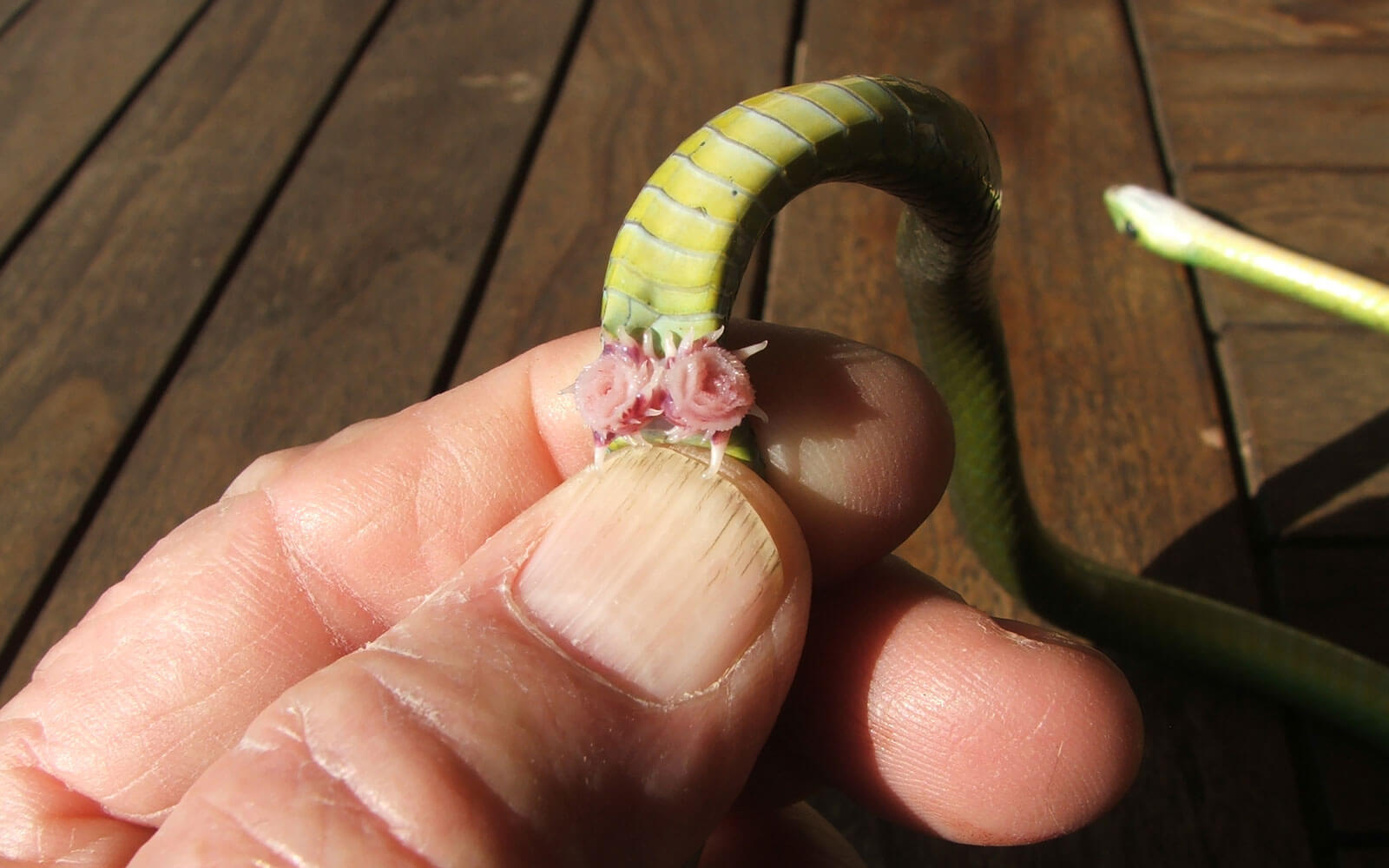
Hemipenes being manually everted.
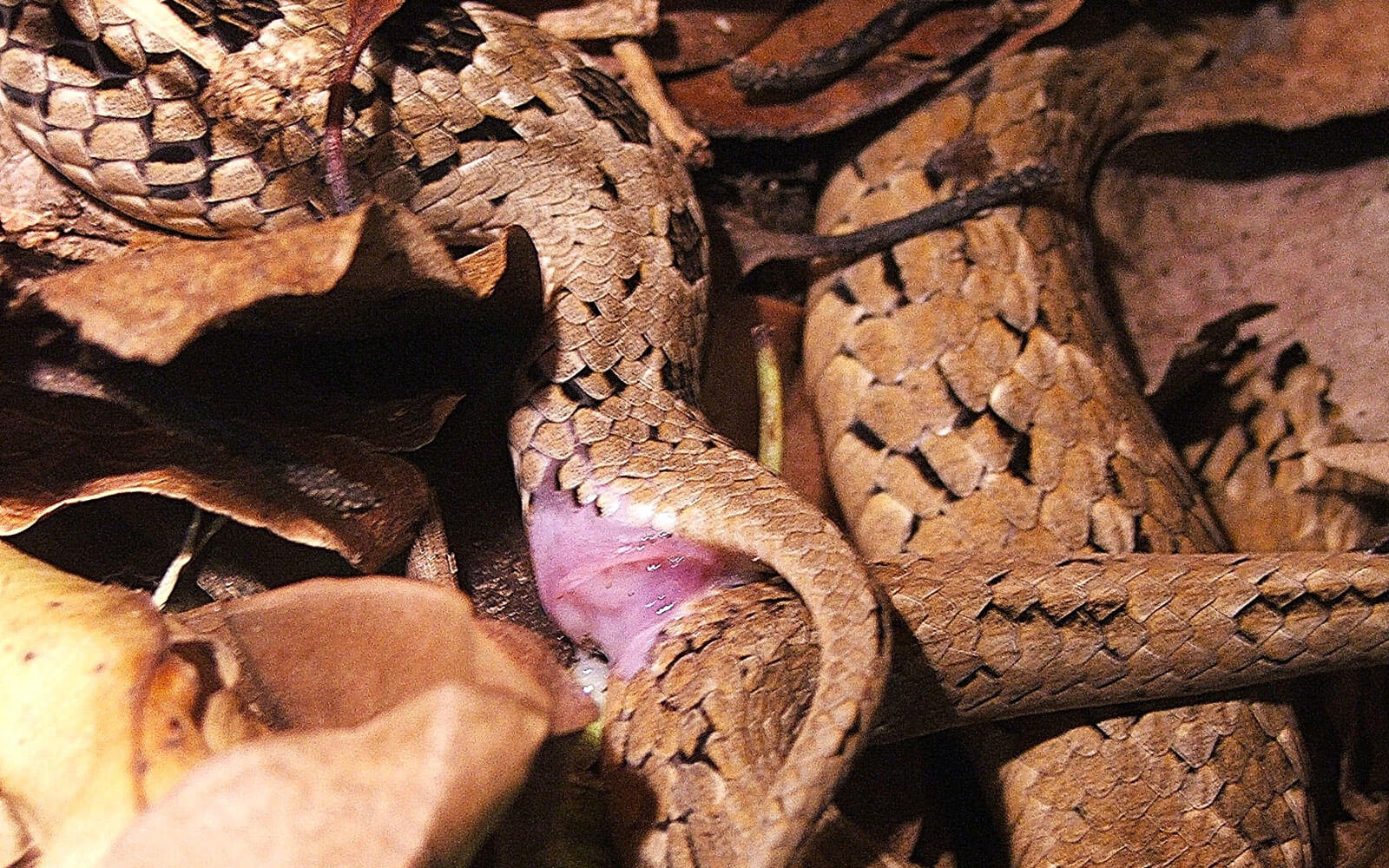
The business end. Night Adders mating. Female has the shorter tail.
6. Once the copulatory function is complete, both snakes will return to their original areas. No kisses, hugs or tearful goodbyes!

About the author
Pat was born in the UK, educated and brought up in Rhodesia/Zimbabwe, and came to South Africa in 1983. He developed an early interest in the study of the behavioural aspects of insects and animals, rather than the deeper scientific side, and he’s worked with snakes for most of his life. Pat conducts educational walks and talks throughout SA and into neighbouring countries where snakes are grossly misunderstood and needlessly killed. He writes articles for a number of publications, and has written the book ‘Getting to Know the Neighbours’, which is all about understanding snake behaviour and is aimed at teaching others how to come to terms with them.
Pat can be contacted at: herpet@snakecountrycc.co.za.